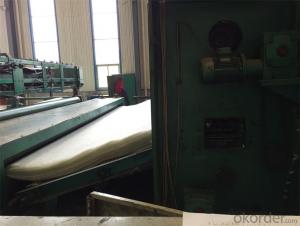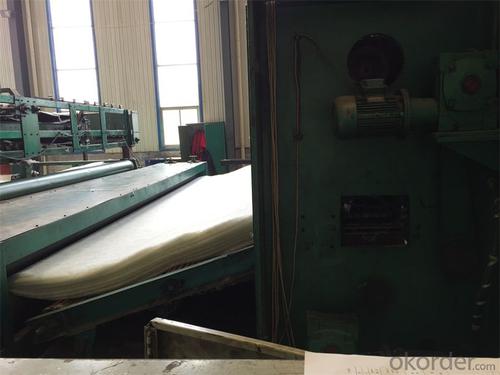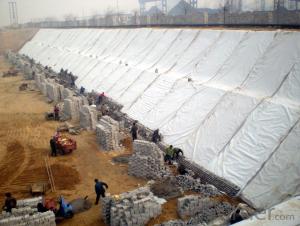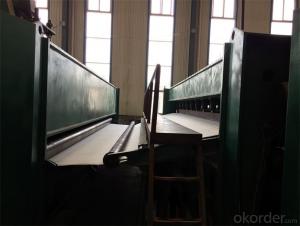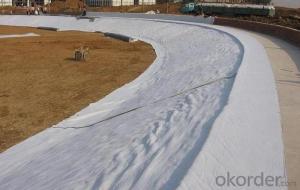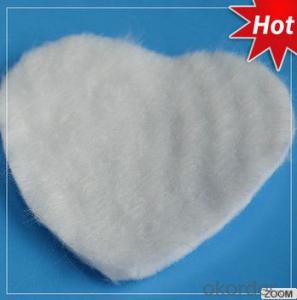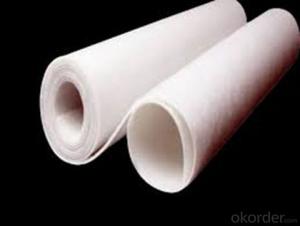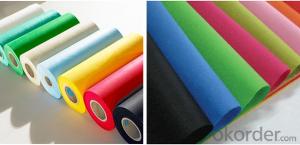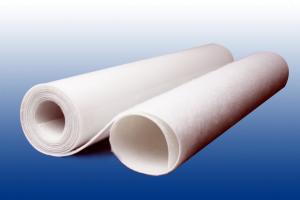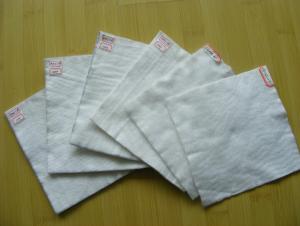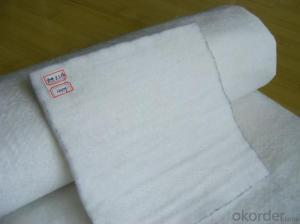Non Woven Geotextile PP Long Fibers Filament Spunbond Needle Punch Geotextile
- Loading Port:
- Qingdao
- Payment Terms:
- TT or L/C
- Min Order Qty:
- 10000 m²
- Supply Capability:
- 100000 m²/month
OKorder Service Pledge
OKorder Financial Service
You Might Also Like
1. nonwoven geotextiles are produced from high quality raw-materials. The Geotextiles
are needle punched to form a strong fabric.This strong fabric retains its dimensional stability and is resistant
to damage from construction stresses.
2. nonwoven Geotextiles are available in varying strengths and thicknesses according to your
project. Custom roll sizes are also available.
3. provides the latest engineered, technically superior products that bring technical certainty and
measurability.
4. geotextiles are highly durable and are characterised by:
· High puncture resistance
· Large elongation before break
· Excellent filter characteristics at all strains
· Specially chosen fibres for high UV protectio
No. | Testing Item | Unit Weight (g/m2) | ||||||||||
100 | 150 | 200 | 250 | 300 | 350 | 400 | 450 | 500 | 600 | 800 | ||
1 | Thickness(mm≥) | 0.9 | 1.3 | 1.7 | 2.1 | 2.4 | 2.7 | 3 | 3.3 | 3.6 | 4.1 | 5 |
2 | (MD)Breaking Strength(KN/m≥) | 2.5 | 4.5 | 6.5 | 8 | 9.5 | 11 | 12.5 | 14 | 16 | 19 | 25 |
3 | (TD)Breaking Strength(KN/m≥) | 2.5 | 4.5 | 6.5 | 8 | 9.5 | 11 | 12.5 | 14 | 16 | 19 | 25 |
4 | (MD)Breaking Elongation(%) | 25-100 | ||||||||||
5 | (TD)Breaking Elongation(%) | |||||||||||
6 | Static (CBR) Puncture(KN≥) | 0.3 | 0.6 | 0.9 | 1.2 | 1.5 | 1.8 | 2.1 | 2.4 | 2.7 | 3.2 | 4 |
8 | Equivalent caliber(mm) | 0.07-0.2 | ||||||||||
7 | Cofficient of Permeability(cm/s) | k×10-1-10-3 (K=1.0-9.9) | ||||||||||
9 | (MD)Tear Strength(KN≥) | 0.08 | 0.12 | 0.16 | 0.2 | 0.24 | 0.28 | 0.33 | 0.38 | 0.42 | 0.46 | 0.6 |
10 | (TD)Tear Strength(KN≥) | 0.08 | 0.12 | 0.16 | 0.2 | 0.24 | 0.28 | 0.33 | 0.38 | 0.42 | 0.46 | 0.6 |
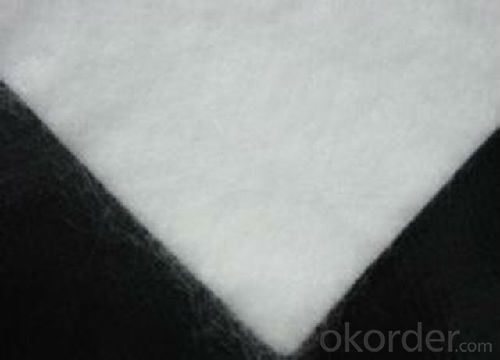
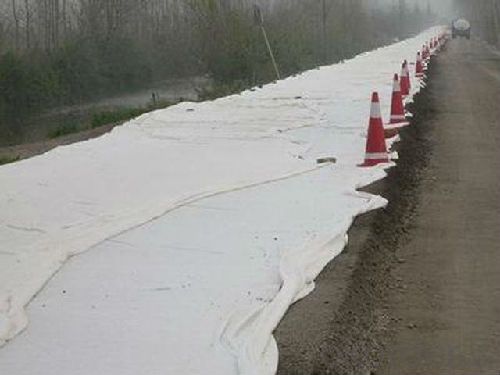


FAQ:
- Q: What can we do for the special customer?
A: Provide custom made service with customer's drawing; We make sure to provide you with the best solutions for your individual case. Whether standard items or non-standard items.
- Q: What can we supply?
A: We provide high levels of communication from start to finish.
- Q: What is our advantage?
A: Top Cemented Carbide has extensive business experience, Fast delivery and high quality.
As its name suggests Geotextiles refers to textiles related to earth or soil. When any permeable material used with rock, soil or earth it is termed as Geotextiles. The basic function of this technology is to prevent soil erosion to strengthening heavy concrete structures. This technology has not yet gained much attention in India, but is widely used in many countries for construction of bridges, roads, railway tracks to improve its strength. Many researchers have view that this technology is not newly developed but is in use from past thousands of years.
Formation of Geotextiles
Geotextiles can be formed of synthetic fibers, natural fibers or combination of the two. In past Geotextiles were made of natural plant fibers while today are usually formed of synthetic polymers such as polyester, polypropylene (PP), polyamides (PA) and polyamides (PA). Geotextiles made from natural fibers are less durable as they get decomposed with passage of time.
Choice of formation depends on the required properties and service life for which it is used. For example, natural fiber base Geotextiles is used for erosion control mats where durability is not a critical factor.
Natural Fiber Based Geotextiles
Natural fibers like Jute and coir have special applications. These different fibers degrade at different rates. Coir geotextiles degrade in 2 to 3 years while jute degrades in 1 to 2 years. Because of this property coir is used in situations where vegetation takes longer to establish, and jute is used in low rainfall areas as it can absorb more moisture. Also used for rural unpaved roads.
Advantages
1. Natural fiber-based geotextiles are environmental friendly.
2. Its biodegradable nature has certain cost-effective applications in erosion control and re-vegetation.
3. It is helpful in quick establishment of vegetation.
4. It also helps in dust control, sand dune formation, wind erosion control and stabilization.
- Q: Can geotextiles be used in bridge abutment construction?
- Yes, geotextiles can be used in bridge abutment construction. Geotextiles can provide reinforcement, separation, and filtration functions in bridge abutments, helping to improve overall stability and prevent soil erosion.
- Q: Can geotextiles be used in tunnel construction?
- Yes, geotextiles can be used in tunnel construction. Geotextiles are often employed as a reinforcement material to enhance the stability and strength of the tunnel lining. They can also be used as a separation layer between the tunnel lining and the surrounding soil, preventing the mixing of different materials and ensuring the overall integrity of the tunnel structure. Additionally, geotextiles can provide filtration and drainage functions, helping to control water flow and mitigate potential issues such as soil erosion or groundwater seepage. Overall, geotextiles play a crucial role in tunnel construction by improving the performance and durability of the tunnel infrastructure.
- Q: What is the latest offer for geotextile prices?
- Geotextile Product Description: Geotextile is made of polypropylene, acrylic yarn as raw material woven by the geosynthetics, widely used in water conservancy, electricity, harbors, highways, railway construction and other geotechnical engineering. Geotextiles Category: Geotextiles a wide range of ordinary geotextile refers to the permeable geotextile, also known as short wire geotextile, polyester geotextile other filament geotextile, waterproof geotextile and so on. Geotextile Price Description: There are many manufacturers of geotextiles across the country, the product offers different prices affected by the impact of raw materials and regional differences, a good product should be a penny goods. The price according to product specifications offer direct contact consultation 182 power 6686 words 2233 to find professional manufacturers to understand, product prices dynamic. Hope to help you
- Q: Can geotextiles be used for reinforcement of canal banks?
- Yes, geotextiles can be used for reinforcement of canal banks. Geotextiles are commonly employed in civil engineering projects to enhance the stability and strength of soil and structures. In the case of canal banks, geotextiles can be used to control soil erosion, improve drainage, and provide reinforcement against potential slope failures. They are effective in distributing loads, reducing soil movement, and preventing the loss of fine particles, which ultimately helps in maintaining the integrity and stability of canal banks.
- Q: How do geotextiles affect groundwater flow?
- Geotextiles can have both positive and negative effects on groundwater flow. When properly installed, they can act as a barrier, reducing the infiltration of surface water into the groundwater system. This can help in controlling erosion and preventing contamination of the groundwater. However, if geotextiles are not installed correctly or become clogged with sediment over time, they may impede the natural flow of groundwater, causing water to accumulate and potentially leading to localized flooding or the alteration of natural recharge patterns. Therefore, the impact of geotextiles on groundwater flow depends on their design, installation, and maintenance.
- Q: What are the composite geomembranes suitable for use? What are the characteristics of it? There are several kinds of composite geotextiles?
- Water: reservoir seepage barrier seepage dam body slope, etc. Highway: road reinforcement, crack prevention and so on
- Q: Can geotextiles be used in wetland restoration projects?
- Yes, geotextiles can be used in wetland restoration projects. They are commonly used as erosion control measures to stabilize soil and prevent sediment runoff, which is crucial for the success of wetland restoration. Geotextiles can also help with water filtration and drainage, improving the overall health and functionality of the wetland ecosystem.
- Q: Whether the reservoir is geotextile or geomembrane is good
- Hello, certainly the geomembrane, the geomembrane is waterproof, and geotextile is not waterproof, the reservoir with geomembrane, to prevent leakage Huazhi geotechnical materials manufacturers to answer your questions
- Q: Filter geotextile performance ~ main function ~
- Asked to filter the geotextile, you answered wrong
- Q: Can geotextiles be used in the construction of stormwater ponds?
- Yes, geotextiles can be used in the construction of stormwater ponds. Geotextiles are often used as a lining material to reinforce the pond's base and slopes, providing stability and preventing erosion. Additionally, geotextiles can act as a filter, preventing fine particles from entering the pond and improving water quality.
1. Manufacturer Overview
| Location | Taian City,Shandong Province,China |
| Year Established | 2003 |
| Annual Output Value | Above US$100 Million |
| Main Markets | Africa, North America, Eastern Europe, South Asia, Western Europe |
| Company Certifications | ISO9001;IS014001 Certificate |
2. Manufacturer Certificates
| a) Certification Name | |
| Range | |
| Reference | |
| Validity Period |
3. Manufacturer Capability
| a) Trade Capacity | |
| Nearest Port | Qingdao Port;Tianjing Port;Shanghai Port |
| Export Percentage | |
| No.of Employees in Trade Department | 21-30 People |
| Language Spoken: | English; Chinese; |
| b) Factory Information | |
| Factory Size: | 10,000-30,000 square meters |
| No. of Production Lines | Above 10 |
| Contract Manufacturing | Geotechnical Material (Geogrid,Fiberglass/Polyester Geogrid;Geocell;Geonet and Geomat;Plastic Safety Fence);Plastics products;Rubber products;Geotextile;Carpet;Compound geomembrane |
| Product Price Range | Average |
Send your message to us
Non Woven Geotextile PP Long Fibers Filament Spunbond Needle Punch Geotextile
- Loading Port:
- Qingdao
- Payment Terms:
- TT or L/C
- Min Order Qty:
- 10000 m²
- Supply Capability:
- 100000 m²/month
OKorder Service Pledge
OKorder Financial Service
Similar products
Hot products
Hot Searches
Related keywords
